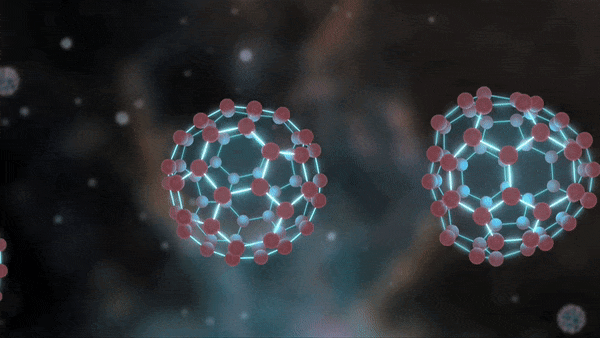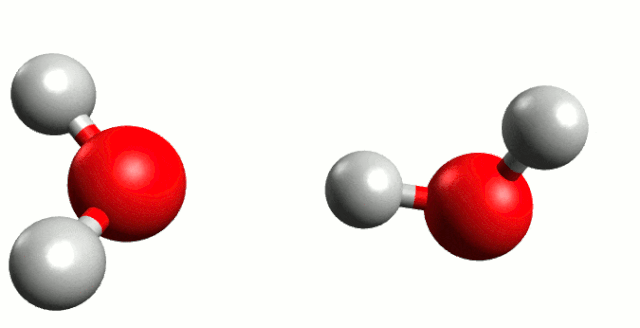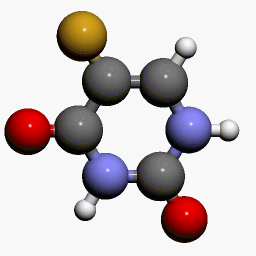_ بخش فرآیند شبیه سازی در (نانو ذرات الکتریکی)
رانش مولکولی Nano Molecular drift برای پایدار کردن نانو ذرات در فرآیند شبیه سازی
پژوهشگر و نویسنده: دکتر ( افشین رشید )

نکته : نانو ذرات تکثیر شده به دلیل سطح ویژه و انرژی سطحی زیاد، به هم میچسبند و تشکیل توده میدهند. این پدیده به از بین رفتن خواص حاصل از اندازه کوچک این ذرات میانجامد.
برای جلوگیری از انباشت نانو ذرات در مرحله سانتز ، از پایدار ساز ها استفاده میشود. معمولًا، دو نوع روش الکتروستاتیکی و رانش فضایی برای پایدار کردن نانوذرات استفاده میشود.. در روش اول، از یونها برای پایدار کردن نانو ذرات استفاده میشود. این یون ها به ذرات جذب میشوند و یک لایه دارای بار الکتریکی اطراف نانو ذرات تشکیل میدهند و درنتیجه رانش مولکولی نانو ذرات تولید شده به دلیل سطح ویژه و انرژی سطحی زیاد، به هم میچسبند و تشکیل توده میدهند. این پدیده به از بین رفتن خواص حاصل از اندازه کوچک این ذرات می انجامد. برای جلوگیری از انباشت نانوذرات در مرحله سنتز ، از پایدار ساز ها استفاده میشود.

معمولا، دو نو روش الکتروستاتیکی و رانش فضایی برای پایدار کردن نانوذرات استفاده میشود. الگویی از دو روش پایدار کردن ذرات را مشاهده می کنید . در روش اول، از یونها برای پایدار کردن نانو ذرات استفاده میشود. این یون ها به ذرات جذب میشوند و یک لایه دارای بار الکتریکی اطراف نانو ذرات تشکیل میدهند و در نتیجه رانش مولکولی از انباشت ذرات میشود.

در روش دوم، برای پایدار کردن نانو ذرات از درشت مولکولها استفاده می شود . درشت مولکول ها به سطح ذرات میچسبند و فضایی را در اطراف ذره اشغال میکنند. با نزدیک شدن ذرات به یکدیگر، این مولکولها درهم می تنند و مانع از به هم چسبیدن ذرات میشوند از انباشت ذرات میشود. در روش دوم، برای پایدار کردن نانو ذرات از درشت مولکولها استفاده می شود . درشت مولکول ها به سطح ذرات میچسبند و فضایی را در اطراف ذره اشغال میکنند. با نزدیک شدن ذرات به یکدیگر، این مولکولها درهم می تنند و مانع از به هم چسبیدن ذرات میشوند. در تکثیر نانو ذرات به روش احیای الکترو استاتیکی ، معمولًا از روش رانش مولکولی به منظور پایدارسازی ذرات بهره می گیرند . یکی از پارامترهای بسیار تأثیر گذار بر اندازه در سنتز الکترو استاتیکی نانو ذرات ، غلظت پیش ماده میباشد. هر چه غلظت پیش ماده بیشتر باشد، اندازه ذرات تولیدی بزرگتر، و برعکس هر چه غلظت پیش ماده کمتر باشد، اندازه ذرات کوچکتر خواهد بود.
نتیجه گیری:
نانو ذرات حاصل، از پایدارسازهای مختلفی استفاده میشود. بسته به شرایط الکترواستاتیکی و رانش مولکولی در نانو ذرات، هر پایدار ساز میتواند نسبت به سایر پایدارساز ها در تکثیر نانو ذرات از مزیت هایی برخوردار باشد.برای جلوگیری از انباشت نانو ذرات، غلظت پایدار کننده ها باید در بازه مشخصی باشد. غلظت خیلی کم پایدار ساز نمی توند از تجمع نانو ذرات جلوگیری کند، و از سوی دیگر غلظت زیاد پایدارساز در تولید نانو ذرات اختلال ایجاد می کند.
پژوهشگر و نویسنده: دکتر ( افشین رشید)
دکترایِ تخصصی نانو _ میکرو الکترونیک


